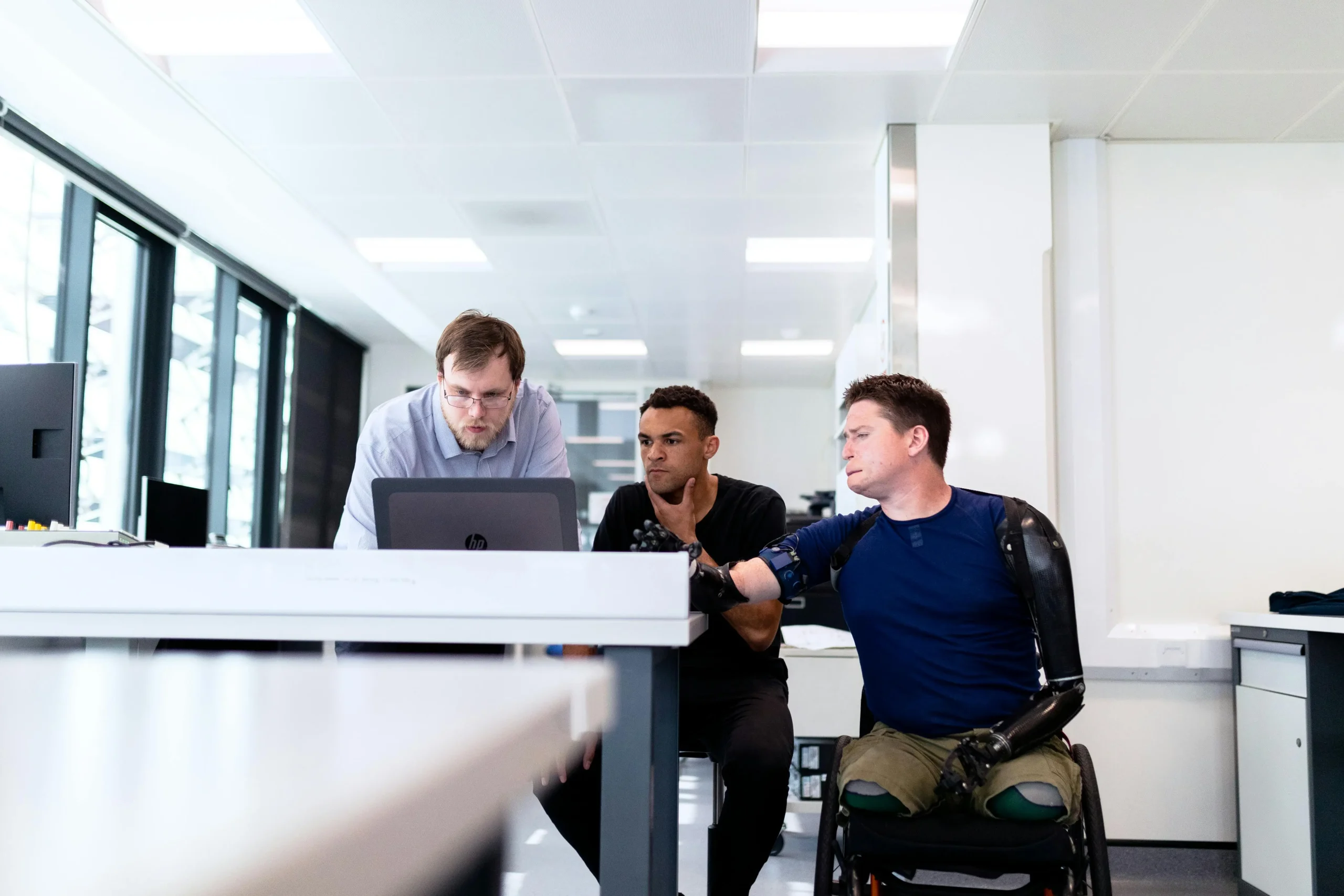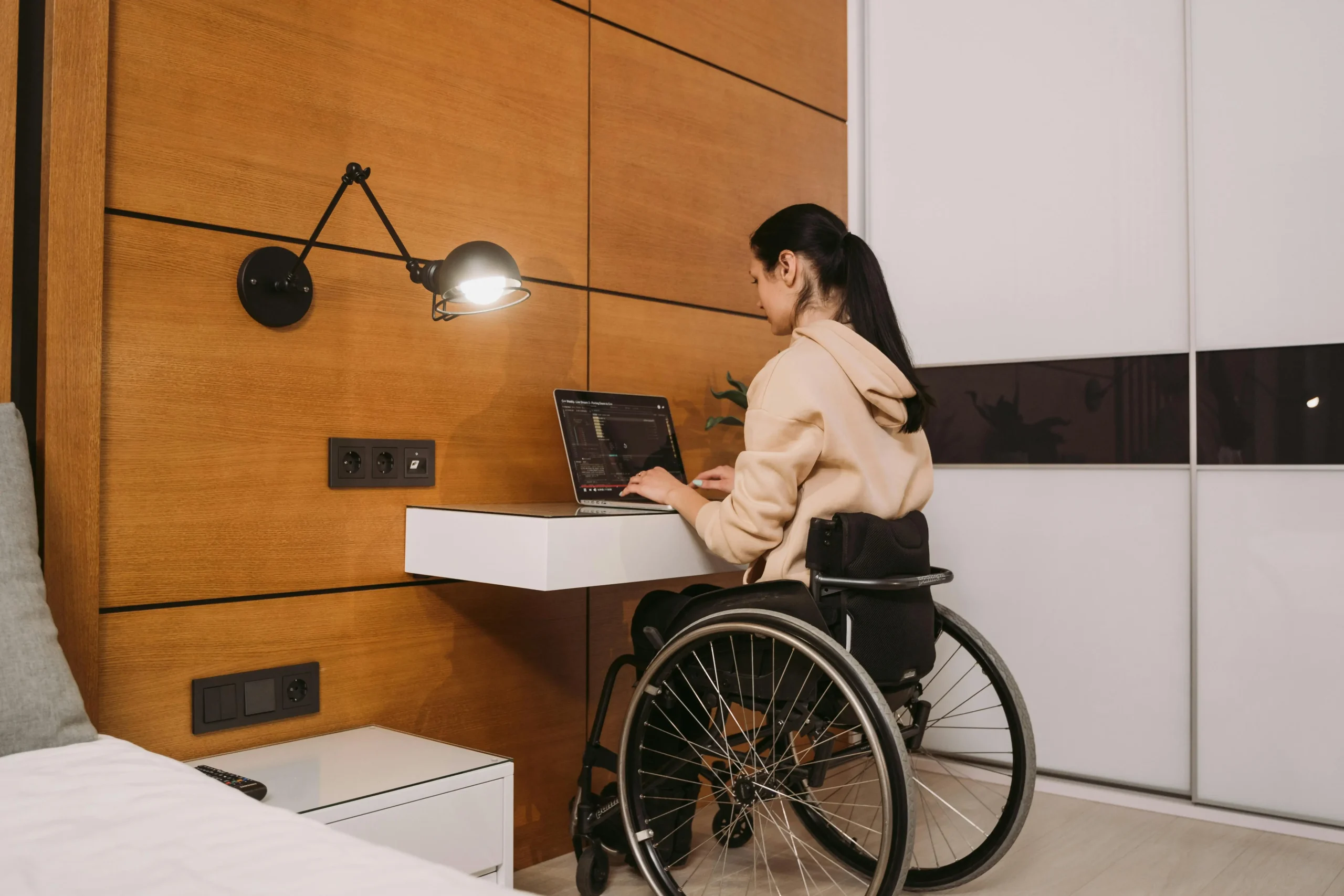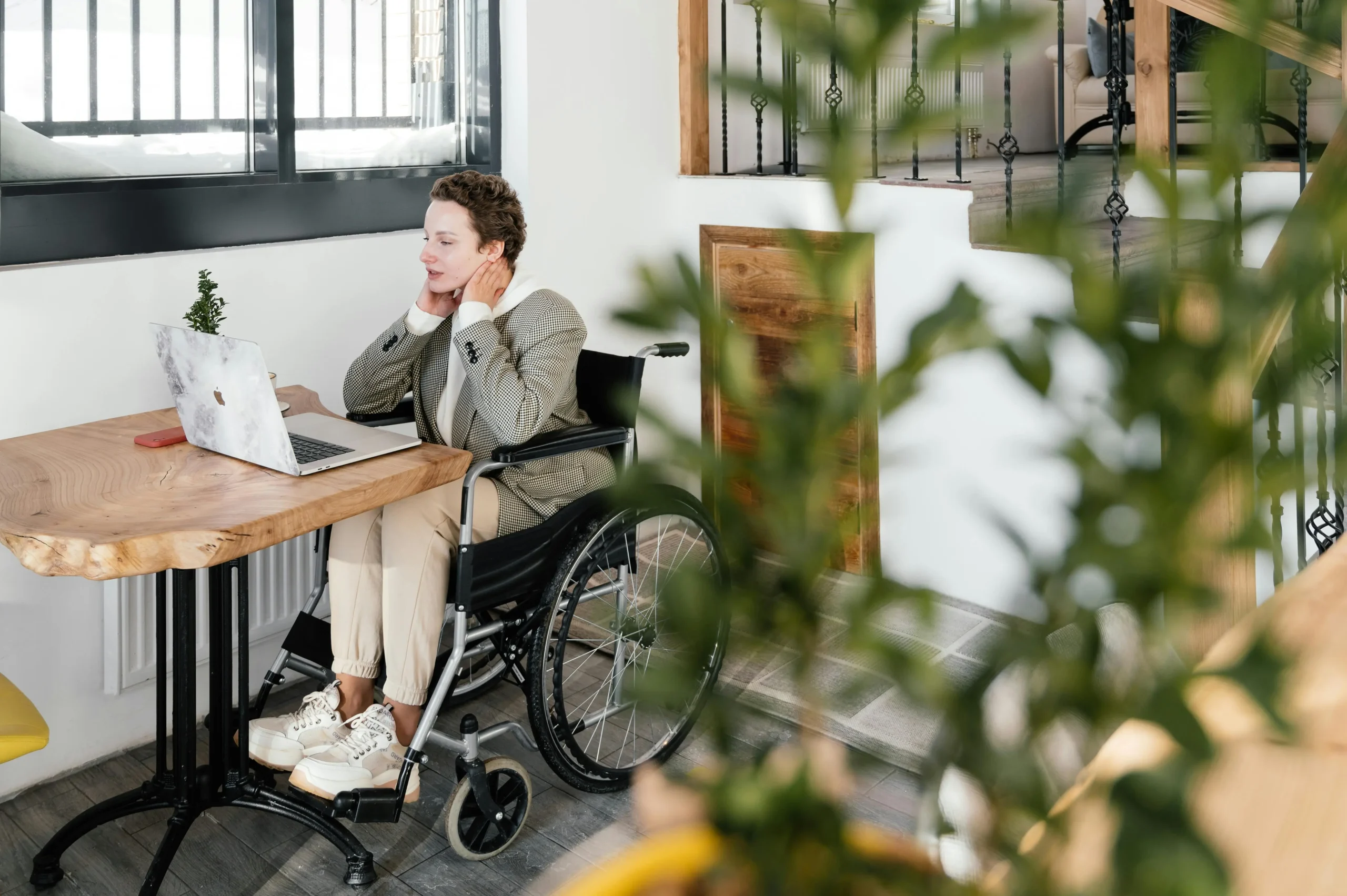Introduction: The Importance of Accessible Hiring in Today’s Workforce
Accessible hiring isn’t just a buzzword; it’s a crucial strategy for employers who want to tap into an untapped talent pool and stay competitive in today’s dynamic workforce. As companies aim for diversity, equity, and inclusion, accessible hiring practices help create workplaces that are welcoming to everyone, including individuals with disabilities.
Why Accessible Employment Matters More Than Ever
The workforce is evolving, and with that evolution comes the responsibility to be more inclusive. According to the World Health Organization, over one billion Accessible people, or about 15% of the global population, experience some form of disability. But despite this, many employers still overlook Accessible in their hiring processes. This not only excludes a large portion of qualified talent but also prevents companies from reaping the benefits of a truly diverse workforce.
The Business Case for Inclusive Accessible Hiring
For businesses, accessible hiring isn’t just a matter of legal compliance or corporate social responsibility—it makes good business sense. Companies with diverse teams are often more innovative, productive, and profitable. By leading the way in accessible hiring, employers gain a competitive edge in the talent market, improve employee morale, and enhance their reputation as an inclusive employer.
Understanding Accessible Hiring: What Does It Really Mean?
Defining Accessible Employment
Accessible employment means creating an environment where everyone, regardless of their Accessible physical abilities, has an equal opportunity to participate in the Accessible hiring process and succeed in the workplace. It’s about removing the barriers—both physical and societal—that prevent people with disabilities from applying for and thriving in their jobs.
The Role of Technology in Accessible Hiring
Technology plays a crucial role in making the hiring process more accessible. From job search websites to online application forms, ensuring that these platforms are designed with Accessible accessibility in mind allows Accessible people with disabilities to navigate the process with ease. Assistive technologies such as screen readers, voice recognition software, and adaptive keyboards are key tools in ensuring accessibility.
The Impact on Accessible People with Disabilities
By adopting accessible hiring practices, employers offer individuals with disabilities the chance to showcase their skills and talents without being limited by physical barriers. This creates a level playing field where qualifications take center stage, not the applicant’s disability.
A Closer Look at Accessible Laws and Regulations
In many countries, accessibility in hiring is mandated by law. In the U.S., for instance, the Americans with Disabilities Act (ADA) requires that Accessible employers provide reasonable accommodations during the Accessible hiring process and throughout employment. It’s essential for employers to understand these laws to ensure compliance and foster a truly inclusive environment.
The Benefits of Accessible Hiring for Employers
A More Diverse and Innovative Workforce
Diversity in the workplace leads to more creativity and innovation. When you bring together people with different perspectives, backgrounds, and experiences, you create an environment where new ideas can flourish. Accessible hiring opens the door to a broader range of perspectives and problem-solving abilities.
Enhanced Company Reputation
Businesses that are committed to inclusive hiring practices gain a reputation for being socially responsible and forward-thinking. In today’s marketplace, customers and clients increasingly expect companies to demonstrate a commitment to diversity and inclusion. Accessible hiring is one of the most effective ways to show your dedication to these values.
Attracting and Retaining Top Talent
Employees are more likely to stay with an employer who values diversity and inclusivity. By offering accessible hiring practices, companies can attract talented candidates from all backgrounds, including those with disabilities. Furthermore, providing reasonable accommodations in the workplace helps retain employees with disabilities by ensuring they have the tools and support they need to succeed.
Increased Employee Satisfaction and Retention
A workforce that feels valued and supported is more engaged and loyal. Accessible hiring helps create an environment where employees with disabilities feel empowered and able to contribute fully to the organization’s success. This fosters a positive work culture that benefits everyone.
How to Start Building an Accessible Hiring Process
Step 1: Review Your Current Hiring Practices
Before making changes, it’s important to assess your current hiring process. Are there steps that could unintentionally exclude people with disabilities? Consider reviewing your job descriptions, application forms, and interview procedures to identify potential barriers.
Step 2: Remove Unintentional Barriers
The first step toward accessible hiring is identifying and removing any unintentional barriers. This might include ensuring your job postings are written clearly and in plain language, as well as using accessible formats for application materials.
Job Postings: Clear, Accessible, and Inclusive
Job descriptions should be clear, concise, and free from jargon. They should also highlight the importance of diversity and inclusion, signaling to candidates that your company values accessible employment. Don’t forget to include information about your commitment to providing reasonable accommodations during the hiring process.
Application Process: Simplified and User-Friendly
The application process should be streamlined and accessible. For example, offering alternative formats for online applications (such as a text-only version) and providing an easy way for candidates to request accommodations can make a big difference.
Website Accessibility: A Vital First Step
A company’s website is often the first point of contact for potential candidates. Ensure your website is accessible by implementing web accessibility guidelines such as the WCAG (Web Content Accessibility Guidelines). This includes ensuring that your site is navigable using a keyboard and that images have alternative text descriptions for screen readers.
Tools and Resources to Enhance Accessible People Accessibility
Assistive Technology in the Hiring Process
Incorporating assistive technology into your hiring process can make it more accessible for candidates with disabilities. Software tools like screen readers and speech recognition systems help ensure that applicants with visual or motor impairments can interact with your application forms and job listings.
Resume Builders for Accessible People Accessibility
There are tools available that help candidates with disabilities build accessible resumes. These tools typically allow applicants to format their resumes in a way that is compatible with screen readers or other assistive technologies.
Accessibility Software for Online Assessments
When conducting online assessments or tests as part of your hiring process, it’s crucial to use software that supports accessibility. Many platforms offer settings for alternative formats, screen reader compatibility, and other features to ensure all candidates can complete the assessments fairly.
Video Interview Platforms with Accessibility Features
With the rise of remote hiring, it’s essential to use video interview platforms that provide features such as closed captions, screen reader support, and other accessibility options.
Training and Education for Your Hiring Team
Educating Staff on Disability Awareness
Training your hiring team to understand the needs of candidates with disabilities is essential for creating an inclusive process. Disability awareness training can help reduce biases and ensure that all candidates are treated fairly and respectfully.
Providing Disability Sensitivity Training
In addition to disability awareness, disability sensitivity training helps employees understand the importance of creating an inclusive work environment. This training helps staff recognize how to best support employees with disabilities and respond to their needs.
Creating an Inclusive Workplace Culture
The hiring process is only the beginning. To truly embrace accessibility, employers need to foster an inclusive workplace culture. This includes providing resources for ongoing support, celebrating diversity, and creating a work environment where all employees feel valued and included.
Overcoming Common Challenges in Accessible Hiring
Addressing Unconscious Bias
Unconscious bias is a common barrier to accessible hiring. Employers must take steps to address this by ensuring that hiring decisions are based on qualifications rather than assumptions about a candidate’s abilities.
Creating Flexible Work Arrangements
Many employees with disabilities benefit from flexible work arrangements, such as remote work or modified schedules. Offering flexibility can make it easier for people with disabilities to succeed in their roles.
Understanding Reasonable Accommodations
Employers should understand what constitutes reasonable accommodations for employees with disabilities. These accommodations might include providing specialized equipment, modifying workspaces, or adjusting work hours to suit the needs of employees with disabilities.
Measuring Success and Continuous Improvement
Collecting Feedback from Employees with Disabilities
To ensure your accessible hiring process is effective, it’s important to collect feedback from employees with disabilities. This can help identify areas for improvement and ensure that your hiring practices are truly inclusive.
Tracking Diversity Metrics
Tracking diversity metrics can help employers measure the success of their accessible hiring efforts. By regularly reviewing these metrics, companies can identify trends and make data-driven decisions to improve their hiring process.
Setting and Reviewing Accessible Hiring Goals
Setting clear goals for accessible hiring is essential for measuring progress. Employers should review these goals regularly and make adjustments as needed to ensure they are meeting their diversity and inclusion objectives.
Conclusion: The Future of Accessible Hiring
Accessible hiring isn’t just the right thing to do—it’s the smart thing to do. By creating an inclusive hiring process, employers not only open the door to untapped talent but also foster a culture of innovation and diversity that benefits everyone. As we move toward a more inclusive future, it’s clear that employers who lead the way in accessible hiring will be better positioned for success in the years to come.
FAQs :
- What is accessible hiring, and why is it important? Accessible hiring ensures people with disabilities can apply for and thrive in jobs, fostering inclusivity, diversity, and a broader talent pool.
- How can I make my job postings more inclusive? Use clear, concise language, highlight commitment to accessibility, and offer job descriptions in multiple formats to ensure accessibility for candidates with disabilities.
- What are reasonable accommodations in the workplace? Reasonable accommodations are adjustments or modifications, such as adaptive equipment or flexible hours, provided to employees with disabilities to help them perform their job duties effectively.
- How can technology improve accessibility in hiring? Technology, like screen readers, speech recognition, and accessible online applications, helps candidates with disabilities navigate the hiring process and interact with employers effectively.
- What is disability sensitivity training, and why is it necessary? Disability sensitivity training educates employees about recognizing and addressing the needs of individuals with disabilities, promoting understanding and reducing biases in the workplace.
- How do I remove barriers in my application process? Simplify application forms, provide alternative formats, ensure website accessibility, and make accommodations for candidates needing assistance to ensure an inclusive process.
- How can I attract top talent with accessible hiring practices? Emphasizing inclusivity and accessibility in your hiring practices helps attract a diverse talent pool, showcasing your commitment to equal opportunities for candidates with disabilities.
- What role does unconscious bias play in hiring decisions? Unconscious bias can influence hiring decisions, leading to discrimination. Addressing it through training and awareness helps ensure fairer, more equitable hiring practices.
- Can remote work options help with accessible hiring? Yes, remote work options can provide flexibility and accessibility for candidates with disabilities, accommodating their needs and ensuring a more inclusive hiring process.
- How can I track the success of my accessible hiring efforts? Track diversity metrics, collect feedback from employees with disabilities, and regularly review hiring goals to assess and improve the effectiveness of your accessible hiring practices.
Internal Links:
- Top 10 Job Search Platforms Tailored for Disabled Job Seekers
- Future-Proof Your Job Search: Confidence Tips for Disabled Professionals













